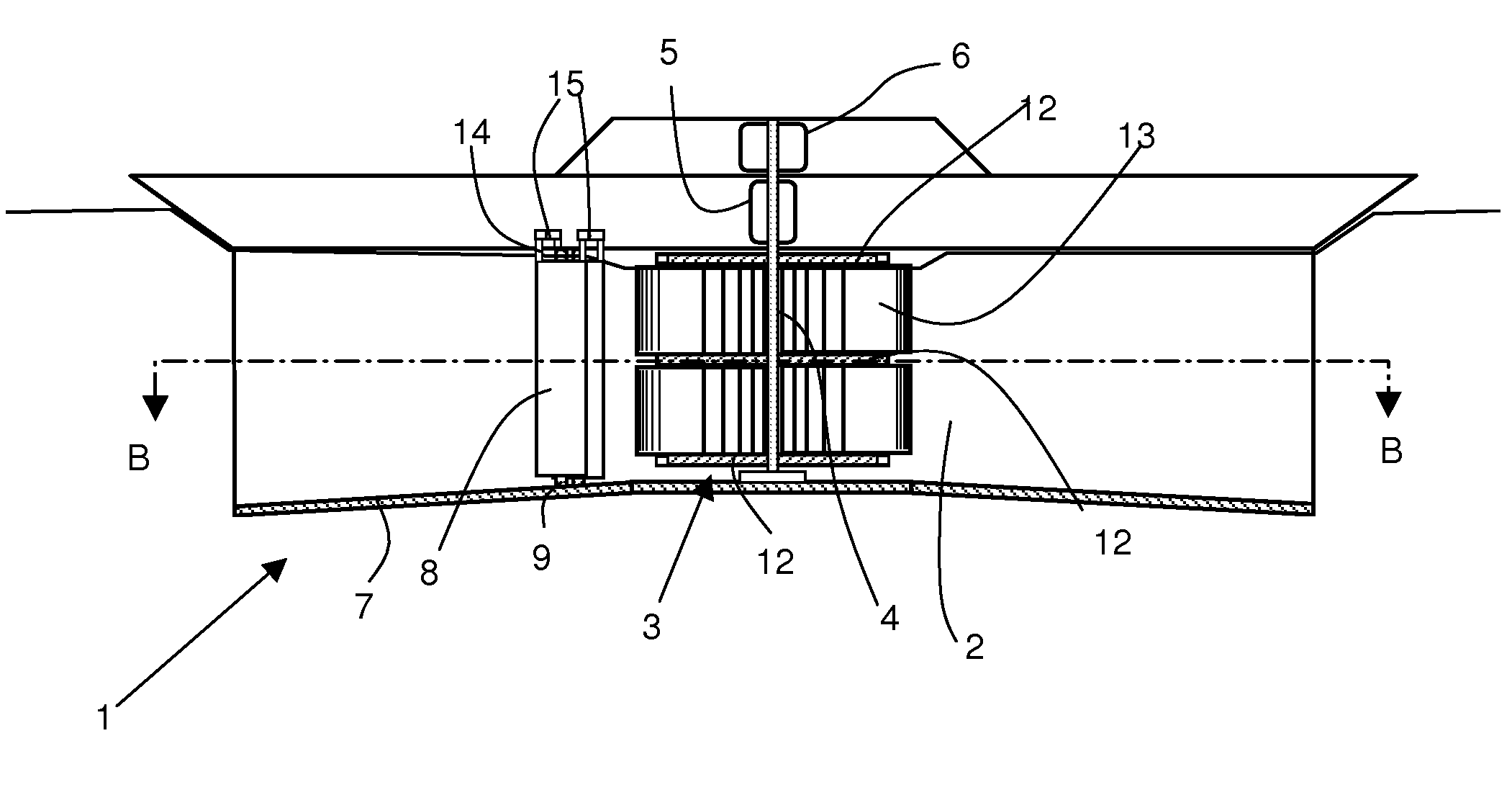Tidal power apparatus
a technology of power apparatus and tide, which is applied in the direction of propulsive elements, water-acting propulsive elements, motors, etc., can solve the problems of affecting the stability of the ecosystem, the inability to find suitable locations for such schemes, and the risk of permanent changes in the ecosystem of the area, so as to simplify the construction and operation, the effect of simplifying construction and maintenan
- Summary
- Abstract
- Description
- Claims
- Application Information
AI Technical Summary
Benefits of technology
Problems solved by technology
Method used
Image
Examples
Embodiment Construction
[0026]The apparatus consists of a floating pontoon 1 having a hollow duct 2 therethrough opening at each end of the pontoon. A turbine 3 is mounted in the duct 2 on a vertical axle 4 which is supported by a bearing 5 at the upper end thereof and which turns an electrical alternator 6 located above the bearing. In practice, a pair of variable speed, variable torque alternators will be provided, driven from the shaft, to provide redundancy, ensuring continuity of supply. Each alternator will normally run at a mean power of about 100 kW, but very exceptionally at 250 kW, so the maximum installed capacity is 500 kW. The alternators feed through AC / DC / AC converters to provide mains synchronised connection through a submarine cable to the electricity grid. The generators also supply low voltage power for the control system, for onboard battery charging (providing emergency power in the event of generator or other failure), and for navigational and deck lighting.
[0027]The duct is preferabl...
PUM
 Login to View More
Login to View More Abstract
Description
Claims
Application Information
 Login to View More
Login to View More - R&D
- Intellectual Property
- Life Sciences
- Materials
- Tech Scout
- Unparalleled Data Quality
- Higher Quality Content
- 60% Fewer Hallucinations
Browse by: Latest US Patents, China's latest patents, Technical Efficacy Thesaurus, Application Domain, Technology Topic, Popular Technical Reports.
© 2025 PatSnap. All rights reserved.Legal|Privacy policy|Modern Slavery Act Transparency Statement|Sitemap|About US| Contact US: help@patsnap.com



